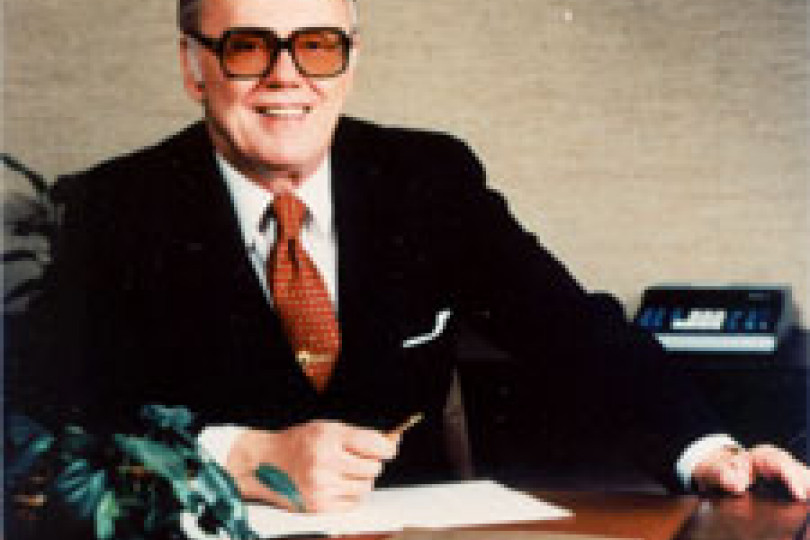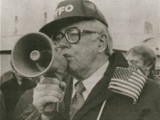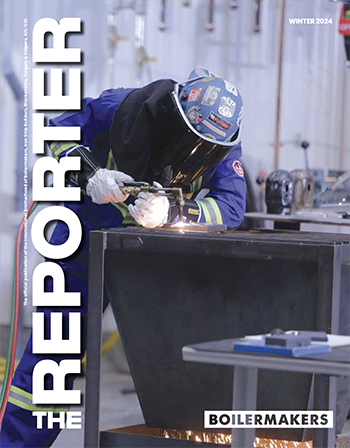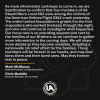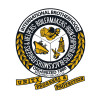Union career spanned more than 50 years
THE INTERNATIONAL Brotherhood of Boilermakers lost one of its most respected and successful leaders April 5 when President Emeritus Charles W. Jones passed away at a Kansas City, Mo., hospice. He was 86.
Jones, or “C.W.” as he was fondly called by many, had a remarkable career with the Brotherhood that spanned more than half a century, including 20 years (1983-2003) as International President. His firm hand and sharp intellect guided our union through some of its most trying years.
Jones’ strategic thinking and visionary leadership helped the Brotherhood survive the Reagan years, the massive relocation of America’s manufacturing base to other countries, the rise of “free” trade, and assaults on labor unions by employers and their political allies.
Jones’ imprint can be seen on the innovative programs he developed or expanded — and on three mergers that brought together other unions and the Brotherhood.
His career with the Boilermakers formally began in 1942 when he went to work as a helper with Local 193 (Baltimore). But the Brotherhood’s influence ran deep within him even before that. His father, Charles B. Jones, was a staff representative and later business manager for Local 154 (Pittsburgh). His two brothers and two uncles were also construction Boilermakers.
C.W. worked less than a year with Local 193 before being drafted into the Army during World War II. He attained the rank of staff sergeant and served in the Pacific Theater, receiving an honorable discharge in 1945.
Jones returned to work as a Boilermaker after the war and soon demonstrated a dedication and zeal for unionism that would become a trademark throughout his career. While employed in field construction, he paid his own way to a Boilermaker conference in Chicago. Later, he used benefits under the G.I. Bill to attend the Harvard Trade Union Program.
International President Charles MacGowan (1944-1954) was so impressed by the young, self-directed Jones that he appointed him to the International staff in 1947 as a District Representative. Jones traveled the country organizing workers until 1956, when International President William Calvin (1954-1962) appointed him Research Director at International headquarters. Just four years later, in 1960, Calvin appointed Jones International Vice President for the Gulf Coast (now the Southeast) Section. As an IVP, Jones was extremely active and successful in overseeing organizing drives in southern states, which traditionally have resisted unions.
Jones became International President upon the retirement of IP Harold Buoy (1970-1983) and held that position until he retired in 2003. C.W. was succeeded by his son, Newton B. Jones. Out of respect for C.W.’s knowledge and many years of service, the International Executive Council elected him President Emeritus. He retained an office at International headquarters, where he continued to serve the union in an advisory capacity.
A pioneer and innovator
JONES’ MANY ACHIEVEMENTS remain vital to the union to this day. His deep appreciation for knowledge and training led him to spearhead the union’s long-running relationship (since 1958) with the School for Workers at the University of Wisconsin. Dozens of Boilermakers continue to receive specialized training there each year. He also oversaw the expansion of the national apprentice program and the creation of the national training center in Kansas City, Kan.
When President Ronald Reagan’s lockout of the air traffic controllers’ union emboldened employers to permanently replace striking union workers, he helped implement the successful Stay in and Fight Back strategy that helped many Boilermakers keep their jobs.
In the construction industry, Jones took on antiunion employers by pioneering the Boilermakers’ Fight Back organizing strategy. The union successfully challenged unfair hiring practices, recovered millions of dollars in wages and benefits, and helped change labor law for the good of all construction unions.
Jones was the chief architect for and proponent of the Boilermakers’ Construction Division, which provides essential services and support to field construction lodges. Creating the Construction Division was an important step toward establishing the national tripartite meeting in the 1980s — an annual gathering of lodges, union contractors, and owners that seeks to promote cooperative and productive relations.
The tripartite meetings led, in part, to the establishment of MOST, a Taft-Hartley trust that addresses safety, training, manpower, and other issues. In 1998, the Construction Innovation Forum awarded MOST and Common Arc (a welding certification corporation) its coveted NOVA award for excellence in innovation — the first time this award was given to a labor union.
Under C.W.’s leadership, the union made great strides in other areas as well. The Brotherhood strengthened its Legislative Education Action Program (LEAP) to protect the interest of members on the political and legislative fronts.
In 1984, just a year into his first term as International President, Jones oversaw the merger of the Cement, Lime, Gypsum, and Allied Workers of America (CLGAW) and the Boilermakers. Two more mergers followed: the Stove Workers in 1994 and the Metal Polishers in 1996. Jones’ leadership skills were put to good use in making the structural and cultural adjustments necessary when different organizations are combined.
Through most of his career, Jones’ beloved wife, Ursula, was frequently by his side. She preceded him in death on Dec. 30, 2008. C.W. is survived by his two sons, Newton and Charles A. Jones (Director of the Boilermaker History Preservation Department/ SAIP); two daughters, Donna Jones (Executive Secretary to the International President) and Doris Cobb; and five grandchildren.
